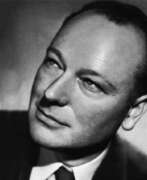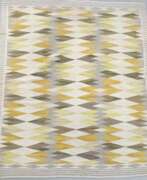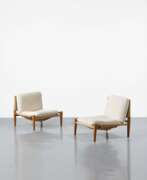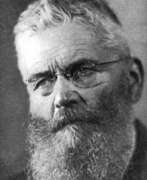Interior designers 20th century


Alexandra Bircken is a German artist, designer and installer who graduated from the Central Saint Martin's College of Art and Design.
The main theme in Alexandra Birkcen's work is the shell. She explores and combines a variety of materials - wool, concrete, wood, bone, everyday objects and clothing, and creates sculptural objects from them. The artist also uses objects that she encounters in everyday life: cars, motorcycles, surgical shirts, rocking horses, skis. However, she strips them of their familiar contexts and surprises us with unusual combinations.


Michel Boyer was one of the last great interior designers who remained true to the principles of modernity.
Boyer collaborated with Dior, Lanvin, Balmain and designed interiors for hotels, embassies and numerous corporate headquarters. His private clients have included Elie de Rothschild, Liliane Betancourt and Karim Aga Khan.


Max Burchartz, full name Max Hubert Innozenz Maria Burchartz, was a German advertising photographer, designer and avant-garde artist.
Burchartz studied at the Art Academy in Düsseldorf and the Academy of Fine Arts in Munich, experimenting with Impressionism. After World War I, he resumed painting and his pictures reflected the quiet rural life of Germany but retained abstract influences.
In 1924 Burchartz devoted himself fully to the new design in typography and advertising, mixing typography, photography and photo collages. Together with Johannes Canis he founded the advertising agency werbe-bau in Bochum, and from 1926 to 1933 he taught commercial art and photography at the Volkwangschule in Essen.
Max Burchartz had a significant influence on the development of typography and advertising design in Germany. In 1928 he became a member of the board of the Society of New Advertising Designers (Ring neuer werbegestalter) and participated in the International Press Exhibition in Cologne. Burchartz also designed furniture and fittings. He is now considered a pioneer of modern design.


Ado Chale is a Belgian artist and designer best known for his exquisite mosaic inlays. Pieces of wood, minerals, or bone are sliced, arranged, and coated with resin to form the opulent surfaces. His furniture and domestic objects reference the natural world not only through the use of precious stones, metals, and organic materials, but also through the textures, patterns, and forms they express. Chale opened his first gallery in 1962. He exhibited jewelry and small side tables adorned with his unique inlay and sourced various gems and rocks via international travel. The self-taught craftsman then incorporated his acquisitions into larger pieces of furniture and sculptures attractive for their beauty and novelty in the 1970s. His work has been exhibited at the Ixelles Museum in Belgium, in France at the Museum of Fine Arts in Nancy and the Palais des Papes in Avignon, and in Japan at retail chain Seibu’s contemporary art museum.


Christo & Jeanne-Claude are an art duo, the married couple Christo Vladimirov Javacheff (1935-2020) and Jeanne-Claude Denat de Guillebon (1935-2009), an iconic pair of innovative land-art artists. They are known for their large-scale installations: they are packing great historical landmarks, working with huge spaces and monumental natural objects. Their projects are distinguished by what they call "Americanism" in Europe - that is, something grandiose and large-scale. Christo and Jeanne-Claude's work is in many major public collections.


Charles Eames and Ray Eames were an American couple of industrial designers who made significant historical contributions to the development of modern architecture and furniture through the work of the Eames Office.
Charles and Ray Eames also worked in industrial and graphic design, fine art and film. Charles was the public face of Eames Office, but Ray and Charles worked together as creative partners and engaged a diverse creative staff. Some of their best known designs include the Eames Lounge Chair and the Eames Dining Chair.
The Charles and Rae Eames design firm has existed for over four decades.


Wharton Esherick is an American artist and sculptor known for his innovative and organic approach to woodworking. He is considered one of the pioneers of the American studio furniture movement and is known for his sculptural furniture, functional objects and architectural woodworking.
Esherick's creative journey led him to experiment with various mediums, including painting, printmaking and sculpture, but it was his work in woodworking that brought him the most recognition.
Esherick developed a distinctive style characterized by organic forms, sculptural detailing and an emphasis on the natural qualities of wood. He believed that furniture design should reflect the inherent qualities of the materials used. Esherick adhered to the concept of "truth of materials", allowing wood to guide his artistic process and shape the final form of his creations.
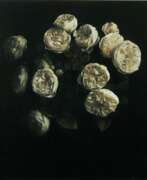

Norbert Fleischmann is an Austrian artist whose passion for painting can be called encyclopedic, because it encompasses a variety of styles and genres, motifs, painting styles and media influences, even forms of presentation and representation.


Christoph M. Gais is a German abstractionist painter and designer. He studied painting at the Academy of Fine Arts in Stuttgart and at the Hochschule für Kunst in Berlin, where he received his master's degree. Christoph M. Geiss's paintings are based on the tradition of gestural abstract painting. His work also includes several art projects in architecture, such as the design of the Louise Schroeder Hall at the Red City Hall in Berlin.


Emile Gallé was a French artist and designer who worked in glass, and is considered to be one of the major innovators in the French Art Nouveau movement. He was noted for his designs of Art Nouveau glass art and Art Nouveau furniture, and was a founder of the École de Nancy or Nancy School, a movement of design in the city of Nancy, France.


Aleksandr Yakovlevich Golovin (Russian: Алекса́ндр Я́ковлевич Голови́н) was a distinguished Russian artist and stage designer, celebrated for his vibrant and ornate creations in the realms of theatre and fine arts. Born in Moscow in 1863, Golovin initially pursued architecture before shifting his focus to painting, a move that enriched Russian art with his unique blend of symbolism and modernism. His academic journey took him from the Moscow School of Painting, Sculpture and Architecture to the Académie Colarossi in Paris, marking the beginning of a prolific career that intertwined Russian heritage with avant-garde European influences.
Golovin's artistic signature is evident in his stage designs for prominent figures like Sergei Diaghilev, Constantin Stanislavski, and Vsevolod Meyerhold. His work for the original production of Stravinsky's "The Firebird" ballet and the scenic design for Beaumarchais's "The Marriage of Figaro" at the Moscow Art Theatre showcases his ability to blend visual splendor with dramatic storytelling. Beyond the theatre, Golovin's paintings, such as portraits of Fyodor Chaliapin and Vsevolod Meyerhold, and works like "Porcelain and flowers" and "Silver willows," display his mastery over color and form, capturing the essence of Russian culture and the beauty of the natural world.
A figure of national pride, Golovin was honored as a People's Artist of the RSFSR, a testament to his significant contribution to Russian art and culture. His legacy continues to inspire, with his works preserved in the Russian Museum among other collections, serving as a testament to his enduring influence on Russian artistic expression.
For collectors and experts in art and antiques, Aleksandr Yakovlevich Golovin represents a pivotal figure in the evolution of Russian visual arts and stage design. His contributions to both fields remain invaluable, reflecting a unique blend of cultural heritage and innovative artistry. For updates related to Golovin, including new product sales and auction events, signing up for updates offers an exclusive insight into the world of this remarkable artist.




Herbert Hamak is a German installation artist and sculptor who lives and works in Hammelburg, Germany.
Herbert Hamak's works are somewhere between painting and sculpture and are the result of a combination of form, color and light. Herbert Hamak works with pigment and mass; he shapes and transforms them into simple monochromatic forms - cubes, parallelograms and columns. Hamak often uses buildings, their facades, their spaces as a canvas or frame for a work of art.


Anton Henning is a German self-taught artist, designer, sculptor and installer.
He lives and works in Berlin, London and New York and has established himself as a talented and extraordinary furniture and interior designer. Henning is inspired by views of world capitals while developing his own avant-garde styles. He also wittily analyzes art history through his installations, sculptures and paintings.


Wolfgang Herzig was an Austrian painter and sculptor known for his critical portrayal of social realities. In his figurative paintings he draws attention to human weaknesses in everyday life.
There is a sense of social criticism in Herzig's work, but he never turns his characters into caricatures. Over time, the artist came to a peculiar two-dimensional form of plastics.


Herbert Hirche was a German architect, interior and furniture designer and educator.
Hirche studied at the famous Bauhaus school in Dessau and Berlin, where Ludwig Mies van der Rohe and Wassily Kandinsky taught. Trained as a carpenter, he first worked for Mies, Egon Eiermann and Hans Scharun before being appointed professor of applied art at the University of Applied Arts in Berlin-Weißensee in 1948. Four years later he became professor of interior and furniture design at the Stuttgart State Academy of Fine Arts. During his years of teaching, Hirche has educated generations of designers.
In addition to teaching, Hirche designed many homes and interiors. He designed furniture for Walter Knoll, Wilkhahn, Holzäpfel and Wilde+Spieth, as well as several projects for Braun, including the HM5-7 music cabinet and the HF1 television set. Hirche's simple and elegant models were exhibited at various Milan Triennales and the 1958 World Exhibition in Brussels. His work had a great influence on the development of product and interior design in Germany and the world.
Hirche was one of the founders of the Deutscher Werkbund (German Association of Craftsmen) in Berlin, was president of the Verband Deutscher Industrie-Designer (Society of Industrial Designers) for ten years, and was a member of the Rat für Formgebung (German Design Council).


Arne Emil Jacobsen is a Danish architect and designer, the founder of the Danish Functionalism style.
He studied at the School of Architecture at the Royal Danish Academy of Fine Arts, and began working as an architect in the 1930s. Inspired by Art Nouveau, he designed several public buildings, including the Aarhus City Hall. In collaboration with Flemming Lassen, he first created a comprehensive overall interior design, including furniture, fixtures, plumbing and other details. After World War II, Arne Jacobsen made a name for himself both in Denmark and around the world.
For six decades, Arne Jacobsen was at the forefront of Danish architecture, creating visionary works of architecture that still look contemporary today. His projects often included both the building itself and the overall interior design as well as the design of the surrounding landscape. The combination of architecture and design is one of the constant characteristics of Arne Jacobsen's work. In projects such as the SAS Royal Hotel (1960) and St. Catherine's College in Oxford (1964), he not only created the architecture, but also designed every detail of the interiors, turning them into a true work of art.
In addition to architectural structures, Arne Jacobsen created a number of highly original chairs and other furniture. From his studio came avant-garde and innovative furniture, lamps, patterns, clocks, cutlery and glassware that are still in demand today.


Gustav Klimt, an Austrian Symbolist painter, was a central figure in Vienna's Secession movement, known for his paintings, murals, sketches, and objets d'art. Born on July 14, 1862, in Baumgarten near Vienna, Klimt's early life was marked by financial hardship, but he showed artistic talent at a young age. He studied at Vienna's Kunstgewerbeschule, where he received a conservative education in architectural painting that influenced his early traditional works.
Klimt's path as an artist was evolutionary and controversial. Initially a successful painter of architectural decorations, his style evolved into a more personal and controversial form, especially after public criticism of his works for the Great Hall of the University of Vienna in 1900, which were deemed pornographic. This turning point led him to abandon public commissions and begin the so-called "golden period," characterized by the use of gold leaf in his work. Some of his most famous paintings, such as The Kiss and Portrait of Adele Bloch-Bauer I, which demonstrate a combination of Byzantine influence and modern symbolism, belong to this phase.
An important aspect of Klimt's career was his participation in the Vienna Secession, an art movement he co-founded in 1897. This movement, which had no manifesto, aimed to showcase unconventional artists and to bring foreign artistic influences to Vienna. Klimt was its first president and participated in the creation of the periodical Ver Sacrum.
Despite his artistic fame, Klimt led a relatively withdrawn lifestyle, often working alone and maintaining discreet personal relationships. Nevertheless, his legacy remains strong: his works fetch high prices at auction and continue to be celebrated for their innovative style and symbolic depth.
For collectors and art experts, Klimt's work represents a fascinating exploration of the evolution of Symbolism and Art Nouveau. His unique approach to form, color, and subject matter makes his work highly valued and constantly relevant in the art world.
If you are interested in keeping up to date with sales and auction events related to the works of Gustav Klimt, we recommend signing up for updates. This will ensure that you don't miss the opportunity to own a piece of this remarkable artist's history.


Fernand Khnopff, full name Fernand-Edmond-Jean-Marie Khnopff, was a Belgian Symbolist painter, graphic artist, sculptor and art historian.
Born into a wealthy family, Fernand attended the Royal Academy of Fine Arts in Brussels, where he studied painting with Xavier Mellerie. Throughout his years at the academy, Khnopff spent summers in Paris studying art, and at the 1878 World's Fair he saw the works of Pre-Raphaelite Edward Burne-Jones and Symbolist Gustave Moreau, which had a decisive influence on his work.
In the early 1880s Khnopff began to exhibit his Symbolist works, often inspired by literary works, particularly by Gustave Flaubert. His paintings combined precise realism with an ethereal fairy-tale atmosphere, and he also painted portraits.
In 1883 Khnopff co-founded Les Vingt, a group of Belgian avant-garde artists. From the early 1990s, he collaborated regularly with the Brussels opera house Royal de la Monnaie, designing costumes and sets for many productions. He also designed the interiors of Brussels' landmark buildings: the Maison Stoclet and the Hôtel de Ville in Saint-Gilles.


Sergey Vasilyevich Malyutin (Russian: Сергей Васильевич Малютин) was a distinguished Russian painter, architect, and designer, celebrated for his multifaceted contributions to the world of art and design. Born in Moscow in 1859 to a merchant family, Malyutin's artistic journey began after an exhibition by the Peredvizhniki inspired him to pursue art. His formal education at the Moscow School of Painting, Sculpture and Architecture honed his talents, leading to a diverse career that spanned painting, set design for operas and ballets, and architectural endeavors.
Malyutin is perhaps best known internationally for designing the first matryoshka doll in 1890, a seminal work that has become an iconic symbol of Russian culture. His involvement in the Arts and Crafts Movement influenced his work, integrating traditional Russian folk motifs into his designs and paintings. Notably, his architectural designs, including the Church of the Holy Spirit in Talashkino and the Pertsov House in Moscow, showcase his dedication to the Russian Revival movement, blending fantastic folk motifs with architectural creativity.
Throughout his career, Malyutin also played a significant role in education, teaching at the Moscow School of Painting, Sculpture and Architecture and advocating for Socialist Realism. His contributions to Russian art were not limited to his creations; he was instrumental in founding the Association of Artists of Revolutionary Russia, emphasizing the importance of art in societal development.
For those interested in exploring the legacy of Sergey Malyutin, his works offer a window into the fusion of traditional Russian art with the innovative currents of his time. Collectors and experts in art and antiques will find his contributions to Russian arts and crafts, especially his role in the creation of the matryoshka doll, to be of particular interest.
To stay updated on exhibitions and auction events featuring Sergey Vasilyevich Malyutin's work, sign up for updates. This subscription is an invaluable resource for enthusiasts looking to deepen their understanding of Malyutin's impact on Russian art and design.


Gwendoline Maud Syrie Maugham was a leading British interior decorator of the 1920s and 1930s who popularized rooms decorated entirely in white.
Although she made her fortune and fame with her white decors, by the mid-1930s she had largely given up the white decors to create interiors with baroque accessories and colour schemes punctuated by bright green, shocking pink, and bold reds.
Maugham's glamorous rooms influenced almost every designer.


Ernst Müller-Scheessel is a German artist and furniture designer.
He worked for a time in Canada - more often in churches as a glass artist. He then taught at the Bremen University of the Arts and co-founded the Bremer Kunstlerbund (Association of Bremen Artists).
In 1910 Ernst Müller-Scheessel opened a studio in the artists' quarter in the center of Bremen and held his first exhibition there in 1913: about 150 works in oil, watercolor and gouache were shown, as well as some of his furniture designs.




Bernhard Pankok, full name Bernhard Wilhelm Maria Pankok, was a German painter and graphic artist, designer, applied artist and architect of the Art Nouveau period.
After acquiring skills as a painter and restorer, Bernhard Pankok studied painting at the Düsseldorf Academy of Fine Arts, then in Berlin. In 1892, he began working in Munich in his own painting studio, doing illustrations for the magazines Pan and Jugend, among others. Pancock was one of the founders of the Munich Association of Art Craft Workshops.
In 1897, Pankok began designing furniture and exhibited his work at numerous exhibitions, including the landmark 1900 "Universal and International Exposition" in Paris. In the same year the art historian Konrad Lange commissioned Bernhard Pancock to design the Haus Lange for him; he worked extensively as an architect in general and designed other buildings in Stuttgart. Pankok was prolific and versatile: he designed sets for opera stages and salons for ocean liners and even the passenger cabins of zeppelins, worked as an architect, furniture designer, interior decorator, painter and graphic artist.
In 1907, he co-founded the Deutsche Werkbund. In 1901 he was invited to teach at the Royal Training and Experimental Workshop in Stuttgart; in 1913 he became its head and in that capacity merged it with the School of Arts and Crafts.


Pierre Paulin was a French furniture designer and interior designer. His uncle Georges Paulin was a part-time automobile designer and invented the mechanical retractible hardtop, who was later executed by the Nazis in 1941 as a hero of the French Resistance. After failing his Baccalauréat, Pierre trained to become a ceramist in Vallaurius on the French Rivera and then as a stone-carver in Burgundy. Soon after, he injured his right arm in a fight, ending his dreams as a sculptor. He then went on to attend the Ecole Camondo in Paris. He had a stint with the Gascoin company in Le Havre where he gained an interest in Scandinavian and Japanese design. He was famed for his innovative work with Artifort in the 1960s and interior design in the 1970s.
At the time, his chair designs were considered very modern and unique and kick-started the successes of his designs among the younger population. Even today, his pieces are still being made and are sought after at auctions.


Charlotte Perriand was a French architect and designer. Her work aimed to create functional living spaces in the belief that better design helps in creating a better society. In her article "L'Art de Vivre" from 1981 she states "The extension of the art of dwelling is the art of living — living in harmony with man's deepest drives and with his adopted or fabricated environment." Charlotte liked to take her time in a space before starting the design process.
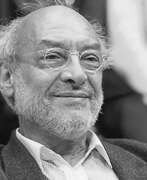

Gaetano Pesce is an Italian architect and a design pioneer of the 20th century. Pesce was born in La Spezia in 1939, and he grew up in Padua and Florence. During his 50-year career, Pesce has worked as an architect, urban planner, and industrial designer. His outlook is considered broad and humanistic, and his work is characterized by an inventive use of color and materials, asserting connections between the individual and society, through art, architecture, and design to reappraise mid-twentieth-century modern life.


Fritz Winold Reiss is an American portrait painter and graphic designer who emigrated from Germany. His father Fritz Reiss and brother Hans Reiss were also artists. Winold Reiss is known for his many portraits of Native American figures of the Harlem Renaissance and common people. He also created murals that are placed in public places in Cincinnati, as well as interior design.


Franz Ringer is a German painter, graphic designer and sculptor.
Franz Ringer came from an old Munich family of carpenters. At the age of 20 he traveled to Tyrol and Switzerland, enrolled at the Technical University of Aachen, returned to Munich and worked as an assistant to the sculptor Josef von Kramer (1841-1908) for ten years, which shaped him as a master stylistically and technically.
Ringer was one of the best-known decorative arts artists in Munich at the time, and he artistically designed many restaurants in Bavaria and in Munich. His design projects are extremely varied.
Franz Ringer is also known as the creator of stone and glass beer mugs, which he painted in Art Nouveau, Art Deco or Biedermeier style. The first Ringer mugs to go into production were made by Villeroy & Boch in 1905. These mugs quickly became popular with the public, especially at scheduled conferences and festivals. Ringer worked for many ceramic manufacturers in Germany. In addition to Villeroy & Boch, these included Reinhold Merkelbach, Merkelbach & Wick, Marzi & Remi, Albert Jakob Thewalt and others.


Jean Royère was a French designer.
A key figure of the avant-garde in the 1950s, Royère tackled all kinds of decoration work and opened branches in the Near East and Latin America. Among his patrons were King Farouk, King Hussein of Jordan, and the Shah of Iran, who were captivated by his freedom of creation and his elegance and entrusted him with the layout of their palaces. Royère pioneered an original style combining bright colors, organic forms and precious materials within a wide range of imaginative accomplishments. In 1980, he left France for the United States, where he lived until his death.


Émile-Jacques Ruhlmann, (sometimes called Jacques-Émile Ruhlmann), was a French furniture designer and interior decorator, who was one of the most important figures in the Art Deco movement. His furniture featured sleek designs, expensive and exotic materials and extremely fine craftsmanship, and became a symbol of the luxury and modernity of Art Deco. It also produced a reaction from other designers and architects, such as Le Corbusier, who called for simpler, functional furniture.


Alejandro Ruiz is an Argentine artist, industrial designer, interior architect and educator.
Alejandro Ruiz graduated in industrial design at UNLP in La Plata, Argentina. He has taught classes at the Domus Academy, where he received his Master's degree, and at the Faculty of Architecture of the Technical University of Milan. At Studioruiz, a company he founded himself, he has worked with various internationally renowned brands.
Alejandro Ruiz has participated in many interior design and architecture events and exhibitions in Italy, France, Finland, Germany, Japan, the Netherlands, England and the USA. In 1994, together with Anna Lombardi, he created the Lessdesign brand, whose aim was to develop industrial projects. The designer has been involved in packaging, interior, store, event and exhibition design at Studioruiz.


Andreas Schmitten is a German painter and sculptor living and working between Düsseldorf and Neuss, Germany.
The artist situates his interdisciplinary and diverse work between drawing, sculpture and installation, using attention-grabbing techniques from religion, theater and commodities. He is interested in issues related to the human being and its history. Andreas Schmitten is known for his extensive and highly complex installations in which figures, objects and interiors are used to create fantastic, surreal visual worlds. Lacquered surfaces, pale colors, and mannered, elegant forms characterize his perfectly executed works, which often transform rooms into unreal and fairytale-like settings.
Schmitten's work can currently be seen in the Waldfrieden Sculpture Park in Wuppertal and the Villa Ludwig in Aachen. He has participated in numerous solo and group exhibitions.


Thomas Ralph Spence was a British architect, painter and sculptor.
Following a family tradition, Spence began his education as an architect, but later excelled in painting, stained glass and metalwork. In 1885 he moved to London, where he became a successful architectural decorator, responsible for decorative painting at Manchester Cathedral. His largest project was St. George's Church in Jesmond, commissioned by Mitchell Senior, it is considered Spence's greatest architectural triumph.
Spence was highly respected as a decorative artist and designer, his stained glass, metalwork and architectural designs were much admired. In 1896 he co-founded the Society of Designers.
Many of Spence's paintings are inspired by the mythology and classical history of Rome, the time of the Punic War. They include scenes of both domestic life and historical events with many participants. He has exhibited with consistent success at the Royal Academy since 1876.


Phillippe Starck is a French designer of interior and mass-produced consumer products.
Starck was educated at the École Nissim de Camondo in Paris, worked for Adidas before founding his first industrial design company, Starck Product, which he later renamed Ubik and went international. He worked with manufacturers in Italy including Driade, Alessi, Kartell, Dimmer in Austria, Vitra in Switzerland and Disform in Spain. He became known for a wide range of his designs, including interior design, architecture, home furnishings, furniture, boats and other vehicles.
Starck has designed residences, hotels, restaurants and other buildings in Tokyo, in Paris, in New York, in Mexico City and other world cities. He has designed the Xiaomi smartphone, the DIAL GPS tracking bracelet, and other technologies. In 2018, Stark collaborated with Axiom Space to design the interior of the International Space Station's habitation module, and a year later, he presented a chair design created with artificial intelligence.
Based on his principles of "democratic design," Starck focused specifically on creating designs for mass-market products rather than unique units. It is impossible to list all the products on which the tireless worker Phillippe Starck has worked and continues to work, the main goal of which is to improve the lives of as many people as possible, as far as possible.


Carlotta Stocker is a Swiss expressionist artist, interior designer and illustrator. She is especially known for her large-scale interpretations of the studio table, in which she worked with strong colors. She developed an expressive, emotional and colorful style for her works. Stocker also created large-format murals in public buildings in Zurich.


Frank Lloyd Wright Jr., commonly known as Lloyd Wright, was an American architect, active primarily in Los Angeles and Southern California. He was a landscape architect for various Los Angeles projects (1922-24), provided the shells for the Hollywood Bowl (1926-28), and produced the Swedenborg Memorial Chapel (or Wayfarers Chapel) at Rancho Palos Verdes, California (1946-71). His name is frequently confused with that of his more famous father, Frank Lloyd Wright.


Frank Lloyd Wright was an American architect, interior designer, writer, and educator. He is widely regarded as one of the most important and innovative architects of the 20th century, with a career spanning over 70 years.
Wright is known for his organic architecture philosophy, which aimed to create structures that were in harmony with their natural surroundings. He designed over 1,000 structures, including private homes, public buildings, and commercial buildings, such as the iconic Guggenheim Museum in New York City.
Some of Wright's most famous works include Fallingwater, a private residence built over a waterfall in Pennsylvania, and the Robie House, a Prairie-style home in Chicago. He also designed the Imperial Hotel in Tokyo, which survived the Great Kanto Earthquake of 1923.
Throughout his career, Wright was known for his innovative use of materials, such as his signature use of concrete blocks, and for his emphasis on the relationship between the built environment and the natural world. He also wrote extensively on architecture and design, publishing over 20 books and numerous articles throughout his life.
Frank Lloyd Wright's influence on modern architecture is profound, and his work continues to be studied and celebrated around the world. He is often regarded as a pioneer of modern architecture and a master of American design.


Willy Zierath was a German artist, painter, and interior designer. He was part of the "Novembergruppe" in Berlin, known for his political and artistic commitment. Zierath's versatile career included painting, graphic arts, and a stint at the renowned Bauhaus in Dessau from 1927 to 1930. He is recognized for his contributions to the artistic network alongside Otto Dix and George Grosz. His work was even highlighted in Lázló Moholy-Nagy's book "From Material to Architecture," underscoring his innovative approach, such as the "two-line tactile ladder and optical translation".
Despite his achievements, Zierath left Germany in 1930 to work in Moscow as a contract architect. During his time at the Metallurgical Combine on the Kuznetskstroy project, he continued to implement his creative ideas. Unfortunately, he died unexpectedly from a heart attack in 1934 while working on this project.
To learn more about his art, you can view a portrait of Willy Zierath painted by Ludwig Meidner at the Los Angeles County Museum of Art. MoMA also has some works by Zierath in its collection.
Stay informed about the latest news and events related to Willy Zierath's art. Sign up for updates and never miss an opportunity to explore new pieces, attend sales, or join auction events focused on his work. It's the best way to keep your finger on the pulse of Zierath's unique contributions to the world of art.
